How to Improve Your Deadlift: Mastering the Ultimate Strength Exercise
In this article, we’ll explore how to improve your deadlift technique for better results.
Henry adjusted the weight plates on the barbell, his focus intense as he prepared for yet another deadlift session. As he gripped the bar, memories flooded back to the first time he attempted this exercise, the struggle and frustration, but also the immense satisfaction of progress. Deadlifting isn’t just about lifting weights off the ground; it’s about pushing your limits, both physically and mentally. And today, Henry is here to guide you through the journey of improving your deadlift.

Understanding the Deadlift
Before we dive into the nitty-gritty of perfecting your deadlift form and technique, let’s understand why this exercise holds such significance. The deadlift is more than just a compound movement; it’s a fundamental test of strength, targeting multiple muscle groups simultaneously. It engages your lower back, glutes, hamstrings, and even your grip strength, making it one of the most comprehensive exercises for building overall strength and functional fitness.
Common Deadlift Mistakes and How to Avoid Them
Now, as with any exercise, there are common pitfalls that can hinder your progress and even lead to injury. Throughout his years of experience as a personal trainer, Henry has seen it all. From rounded backs to improper foot positioning, he knows the importance of addressing these mistakes early on. In this section, we’ll delve into some of the most prevalent deadlift errors and, more importantly, how to improve your deadlift by avoiding them.
Subscribe And Get Our Free E-Book:Unlocking The Power Of Nutrition-Supplements, Substitutes, and Superfoods!
Perfecting Your Deadlift Form
Form is king when it comes to deadlifting. Without proper technique, you not only risk injury but also limit your potential for strength gains. Henry often emphasizes the importance of starting with light weights and mastering the basics before attempting heavier loads. Whether it’s maintaining a neutral spine, engaging your lats, or driving through your heels, every aspect of your form plays a crucial role in maximizing your deadlift performance. Stay tuned as we break down the intricacies of perfecting your deadlift form and unlocking your true strength potential.
Advanced Techniques and Variations
Once you’ve honed your basic deadlift form, it’s time to explore advanced techniques and variations to further challenge your muscles and break through plateaus. Henry loves experimenting with different grip styles, stance widths, and tempo variations to keep his workouts exciting and effective. In this section, we’ll explore some of the most effective advanced deadlift techniques and how they can take your strength to new heights.
Programming Your Deadlift Routine
Consistency is key when it comes to improving your deadlift. However, simply showing up to the gym and lifting aimlessly won’t cut it. You need a well-structured training program tailored to your goals and abilities. Henry has spent years fine-tuning his programming strategies to help his clients achieve their deadlift aspirations. From set and rep schemes to deload weeks and accessory exercises, we’ll cover everything you need to know to improve your deadlift systematically and sustainably.
Mobility and Recovery
Deadlifting places significant demands on your body, which is why prioritizing mobility and recovery is essential for long-term progress and injury prevention. Henry often incorporates foam rolling, dynamic stretches, and mobility drills into his clients’ routines to improve their movement quality and reduce the risk of injury. In this section, we’ll explore the importance of mobility work and recovery strategies to ensure you stay strong and healthy throughout your deadlift journey.
Mental Strategies for Deadlifting
While physical strength is crucial for deadlifting, mental fortitude is equally important. Henry knows firsthand the mental hurdles that accompany heavy lifts—the doubt, fear, and uncertainty. But he also knows the power of a strong mindset in overcoming these obstacles. Whether it’s visualization techniques, positive self-talk, or goal setting, cultivating mental resilience can make all the difference in improving your deadlift performance.
Real-Life Success Stories
To wrap up our journey, we’ll draw inspiration from real-life success stories of individuals who have transformed their deadlifts and, by extension, their lives. From beginners who overcame initial struggles to seasoned lifters who shattered personal records, these stories serve as a testament to the transformative power of the deadlift and the resilience of the human spirit.
As we embark on this journey together, remember that how to improve your deadlift is not just about lifting weights; it’s about embracing the process, pushing past your limits, and becoming the strongest version of yourself—both inside and out. So, grab your chalk, chalk up your hands, and let’s deadlift our way to greatness.
Understanding the Deadlift
As Henry wiped down the barbell, preparing for another session with his clients, his mind wandered to the origins of the deadlift. It’s fascinating how this timeless exercise has evolved over centuries, from its humble beginnings to becoming a cornerstone of strength training. Let’s delve into the history and background of the deadlift, tracing its roots and understanding its significance.

History and Background
The deadlift traces its origins back to ancient Greece, where it was known as the “halteres.” Athletes would lift heavy stones or weights from the ground to improve their physical prowess. Fast forward to the 18th century, and we see the emergence of modern weightlifting competitions, where the deadlift featured prominently as one of the primary lifts.
Over the years, the deadlift underwent various modifications and refinements, with athletes and coaches experimenting with different techniques and equipment. It wasn’t until the 20th century that the deadlift gained widespread recognition as a foundational strength exercise, thanks in part to the rise of powerlifting and strongman competitions.
Today, the deadlift is a staple in gyms around the world, revered for its simplicity and effectiveness in building raw strength and muscle mass. From Olympic weightlifters to recreational lifters, everyone can benefit from incorporating the deadlift into their training regimen.
Muscles Worked
One of the key reasons why the deadlift is such a potent exercise is because it targets multiple muscle groups simultaneously. At its core, the deadlift primarily engages the posterior chain, including the erector spinae, glutes, and hamstrings. These muscles work in harmony to lift the weight off the ground and maintain proper spinal alignment throughout the movement.
Additionally, the deadlift recruits secondary muscles such as the quadriceps, lats, traps, and forearms to stabilize the weight and facilitate the lifting motion. By engaging a wide array of muscles, the deadlift not only builds brute strength but also improves overall muscle balance and coordination.
Benefits
Beyond its ability to build sheer strength, the deadlift offers a myriad of benefits that extend far beyond the gym floor. One of the most notable advantages is its impact on posture. As Henry often tells his clients, a strong and stable spine is essential for daily activities and athletic performance alike. By strengthening the muscles of the back and core, the deadlift helps maintain proper posture and reduce the risk of injury.
Moreover, the deadlift is a functional movement that mimics real-life activities such as lifting groceries or picking up children. By mastering proper deadlift technique, individuals can improve their ability to perform these tasks safely and efficiently. Additionally, the deadlift can enhance athletic performance in various sports, from football to martial arts, by increasing explosiveness and power production.
Furthermore, the deadlift is a highly effective exercise for burning calories and promoting fat loss. Its compound nature requires significant energy expenditure, making it an excellent choice for those looking to shed excess pounds and improve body composition.
The deadlift is much more than just a strength exercise; it’s a full-body workout that offers a multitude of benefits for individuals of all fitness levels. Whether you’re a seasoned lifter or a novice in the gym, learning how to improve your deadlift can transform your physique, enhance your performance, and elevate your overall health and well-being. So, embrace the challenge, perfect your technique, and reap the rewards of this timeless exercise.
How to Improve Your Deadlift Process: Avoiding Common Mistakes
As Henry observed his clients performing deadlifts, he couldn’t help but notice some common mistakes that were holding them back from reaching their full potential. Poor form, in particular, stood out as a recurring issue, compromising both performance and safety. Let’s explore some of the most common deadlift mistakes and, more importantly, how to improve your deadlift by avoiding them.
Build A Bigger Dealift With Perfect Technique Video
Common Deadlift Mistakes and How to Avoid Them
Poor Form
One of the most prevalent deadlift mistakes is poor form, which can manifest in various ways and have serious consequences. As Henry often emphasizes to his clients, maintaining proper form is essential not only for maximizing strength gains but also for preventing injury. Let’s delve into some common form issues and how to improve your deadlift by addressing them.
Rounding the Back
Perhaps the most notorious form mistake in the deadlift is rounding the back. This occurs when the spine flexes forward, placing excessive stress on the vertebrae and increasing the risk of disc herniation and other spinal injuries. To avoid this, focus on maintaining a neutral spine throughout the lift. Imagine bracing your core and keeping your chest up as you hinge at the hips. Engage your lats to keep the bar close to your body, minimizing the distance it has to travel and reducing strain on your lower back. By prioritizing spinal alignment, you’ll not only enhance your deadlift performance but also safeguard your long-term spinal health.
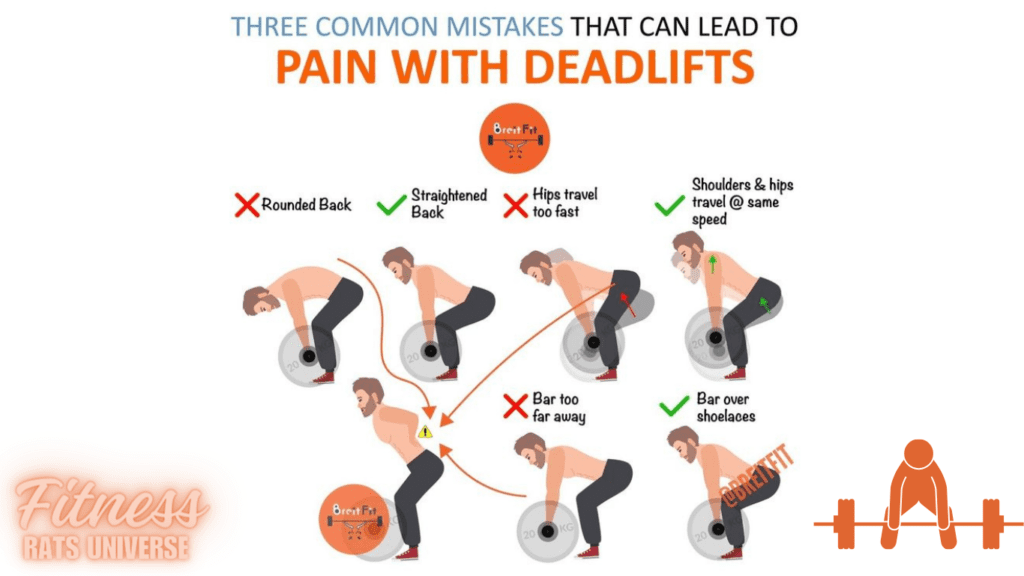
Improper Setup
Another common mistake that can hinder deadlift performance is an improper setup. This encompasses everything from stance width and grip placement to overall body alignment. Henry often reminds his clients that the setup is just as crucial as the lift itself, laying the foundation for a strong and stable deadlift. Here’s how to improve your deadlift setup for optimal performance:
- Stance: Position your feet hip-width apart, with toes pointing slightly outward. This stance provides a stable base of support and allows for optimal force transfer from the ground to the barbell.
- Grip: Grab the barbell with a shoulder-width grip, ensuring that your hands are directly beneath your shoulders. Use either an overhand or mixed grip, whichever feels most comfortable and secure for you.
- Body Alignment: Maintain a straight line from your head to your hips to your heels throughout the lift. Avoid leaning too far forward or backward, as this can compromise your balance and leverage.
By mastering the setup, you’ll set yourself up for success and minimize the risk of injury during the deadlift.
Neglecting Warm-Up
Lastly, one of the most overlooked aspects of deadlifting is the warm-up. Neglecting to properly warm up your muscles and joints before lifting can increase the likelihood of strains, pulls, and other injuries. Henry always stresses the importance of a comprehensive warm-up routine, tailored specifically to prepare the body for the demands of deadlifting. Here’s how to improve your deadlift warm-up:
- Dynamic Stretching: Incorporate dynamic stretches that target the muscles and joints involved in the deadlift, such as hip flexors, hamstrings, and thoracic spine.
- Activation Exercises: Perform activation exercises to engage key muscle groups and prime them for lifting. This may include glute bridges, bird dogs, and band pull-aparts.
- Gradual Progression: Start with lighter weights and gradually increase the load as you warm up, allowing your body to acclimate to the demands of the deadlift.
By investing time in a thorough warm-up, you’ll enhance blood flow, increase mobility, and reduce the risk of injury during your deadlift sessions.
Avoiding common deadlift mistakes is essential for maximizing performance, minimizing injury risk, and achieving long-term success in your strength training journey. By prioritizing proper form, mastering the setup, and incorporating a comprehensive warm-up routine, you’ll lay the groundwork for how to improve your deadlift and reach new heights of strength and athleticism.
Perfecting Your Deadlift Form
As Henry continued his journey as a personal trainer, he found himself constantly refining his approach to teaching the deadlift. Perfecting this foundational exercise wasn’t just about lifting weights; it was about mastering every aspect of form and technique. In this part, Henry would delve into how to improve your deadlift by perfecting form, offering a step-by-step guide, utilizing visual aids, and providing helpful cues and tips.
| Phase | Key Component | Cues and Tips |
|---|---|---|
| Setup | Foot Position | – Feet shoulder-width apart<br>- Toes pointed slightly out |
| Grip | – Grip shoulder-width apart<br>- Overhand or mixed grip | |
| Back Position | – Spine neutral<br>- Chest up | |
| Hip Position | – Hips higher than knees<br>- Hips back, weight on heels | |
| Execution | Pull | – Drive through heels<br>- Keep bar close to body |
| Hip Extension | – Squeeze glutes at the top<br>- Full extension | |
| Core Engagement | – Brace core throughout<br>- Maintain tightness | |
| Completion | Lowering | – Hinge at hips<br>- Control descent |
| Bar Path | – Follow straight line<br>- Keep bar close to body | |
| Breathing | – Inhale at setup<br>- Exhale on exertion |
Perfecting Your Deadlift Form
For Henry, perfecting deadlift form was akin to mastering an art form. It required attention to detail, precision, and a deep understanding of biomechanics. As he guided his clients through each step of the process, he emphasized the importance of technique over brute strength.
Step-by-Step Guide
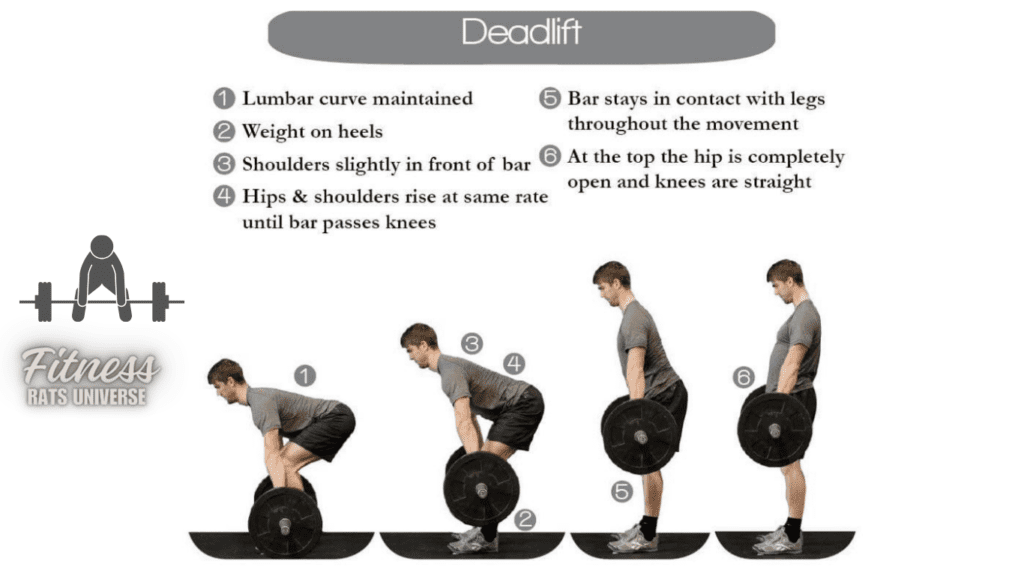
Breaking down the deadlift into a series of steps allowed Henry’s clients to grasp the intricacies of the movement. From the setup to the execution, each phase played a crucial role in achieving optimal performance. Henry’s step-by-step guide provided clarity and direction, empowering his clients to approach the deadlift with confidence and competence.
Visual Aids
Incorporating visual aids was another strategy Henry used to enhance his clients’ understanding of the deadlift. Whether through diagrams, photos, or video demonstrations, visual cues helped reinforce proper technique and positioning. Henry believed that seeing the movement in action was invaluable for his clients, as it allowed them to visualize success and internalize the mechanics of the lift.
Cues and Tips
As Henry observed his clients performing deadlifts, he offered a plethora of cues and tips to keep their form in check. From cues like “brace your core” to tips like “keep the bar close to your body,” these verbal reminders served as checkpoints throughout the lift. Henry’s cues and tips were like guiding lights, steering his clients toward optimal form and performance.
In Henry’s eyes, perfecting the deadlift form was a journey of continuous improvement. It required patience, persistence, and a willingness to embrace feedback. As he guided his clients through each session, he saw their confidence grow and their lifts improve.
Henry’s approach was rooted in the belief that everyone had the potential to excel at the deadlift. It was not just about lifting heavy weights; it was about mastering the fundamentals and honing one’s craft. With his guidance and expertise, Henry’s clients were well on their way to unlocking their true strength potential.
In conclusion, perfecting deadlift form was a cornerstone of Henry’s training philosophy. Through a combination of detailed instruction, visual aids, and helpful cues, he empowered his clients to elevate their deadlift game and achieve their fitness goals. As Henry continued to refine his teaching methods, he remained committed to helping others improve their deadlift and become the best versions of themselves.
Advanced Techniques and Variations
As Henry delved deeper into the world of strength training, he discovered a myriad of advanced techniques and variations that could take his clients’ deadlift game to the next level. In this part, Henry would share his expertise on how to improve your deadlift by incorporating advanced techniques, variations, and strategies into their training regimen.
| Deadlift Variation | Benefits | Key Points |
|---|---|---|
| Sumo Deadlifts | – Emphasizes quadriceps and adductors<br>- Suitable for long-limbed lifters or limited mobility | – Wide stance, hands inside knees<br>- Engage quads and adductors<br>- Maintain upright torso position |
| Romanian Deadlifts | – Targets hamstrings and glutes directly<br>- Focus on hip hinge mechanics | – Narrow stance, hip hinge movement<br>- Keep bar close to body<br>- Control tempo |
| Trap Bar Deadlifts | – Offers safer alternative for individuals with back issues or wrist discomfort | – Neutral grip handles, elevated starting position<br>- Engage glutes and hamstrings<br>- Maintain core stability |
| Progressive Overload Strategies | ||
| Increasing Weight | – Gradually increase weight on the barbell | – Focus on maintaining proper form as weight increases |
| Additional Sets/Reps | – Add more sets or reps to increase volume | – Ensure adequate rest between sets to prevent overtraining |
| Reduced Rest Periods | – Decrease rest periods between sets for increased intensity | – Maintain quality of reps even with shorter rest periods |
| Accessory Exercises | ||
| Hip Thrusts | – Strengthens glutes and improves hip extension | – Use resistance bands or barbell for added resistance |
| Hamstring Curls | – Targets hamstrings for better posterior chain activation | – Perform with controlled tempo and full range of motion |
| Back Extensions | – Strengthens lower back muscles and improves spinal stability | – Use body weight or equipment like hyperextension benches |
Advanced Techniques and Variations
Henry was excited to introduce his clients to the world of deadlift variations, each offering unique benefits and challenges. From sumo to Romanian to trap bar deadlifts, there was a variation to suit every lifter’s needs and preferences.
Deadlift Variations
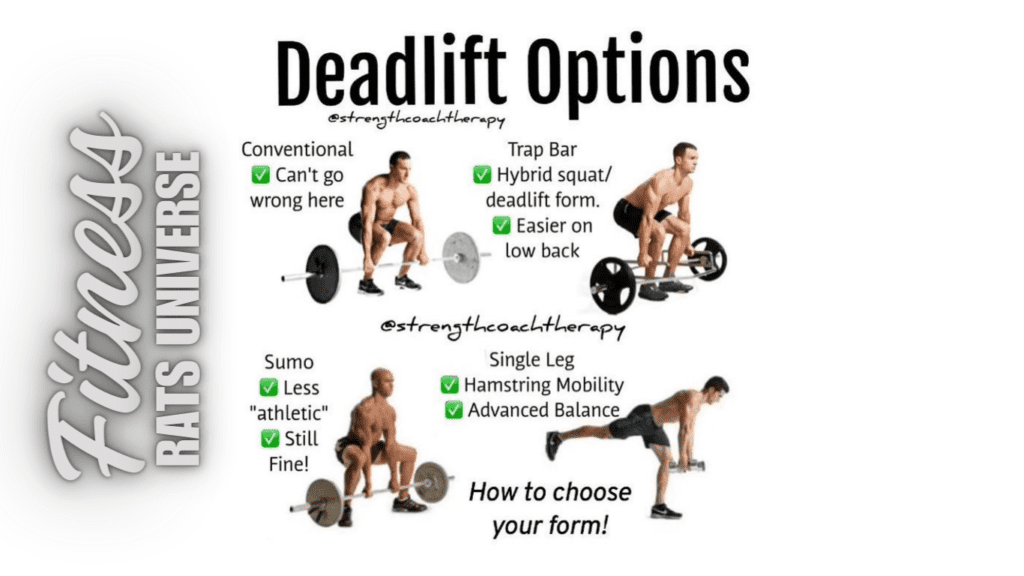
Sumo deadlifts, with their wide stance and hands inside the knees, emphasized the use of the quadriceps and adductors, making them an excellent choice for lifters with long limbs or limited mobility. Romanian deadlifts, on the other hand, targeted the hamstrings and glutes more directly, with a focus on hip hinge mechanics and controlled tempo. And trap bar deadlifts, with their neutral grip handles and elevated starting position, offered a safer alternative for individuals with back issues or wrist discomfort.
Each variation had its own set of benefits and instructions, tailored to the individual’s goals and abilities. Henry took great care in teaching his clients the proper form and execution for each variation, ensuring they reaped the maximum benefits while minimizing the risk of injury.
Progressive Overload
As Henry’s clients grew stronger and more proficient in their deadlift technique, he emphasized the importance of progressive overload in their training. Progressive overload involved gradually increasing the weight and volume of their deadlifts over time, challenging their muscles and stimulating growth.
Henry taught his clients various strategies for implementing progressive overload, such as increasing the weight on the barbell, adding additional sets or reps, or reducing rest periods between sets. He also stressed the importance of tracking their progress over time, whether through a training log or a fitness app, to ensure they were continually pushing their limits and making gains.
Accessory Exercises
In addition to deadlift variations and progressive overload, Henry incorporated a variety of accessory exercises into his clients’ training programs to support and enhance their deadlift performance. These accessory exercises targeted key muscle groups involved in the deadlift, such as the glutes, hamstrings, and lower back, helping to address weaknesses and imbalances.
Exercises like hip thrusts, hamstring curls, and back extensions were staples in Henry’s accessory arsenal, providing his clients with a well-rounded approach to deadlift training. By strengthening these supporting muscles, his clients were able to lift heavier weights with greater confidence and efficiency, ultimately leading to improved deadlift performance.
In conclusion, advanced techniques and variations played a crucial role in Henry’s approach to deadlift training. By incorporating sumo, Romanian, and trap bar deadlifts, implementing progressive overload strategies, and including accessory exercises in their training programs, his clients were able to improve their deadlift performance and achieve their strength and fitness goals. As Henry continued to refine his coaching methods and stay abreast of the latest advancements in strength training, he remained committed to helping his clients reach new heights of success in the gym.
Maximizing Deadlift Performance: Strategic Programming for How to Improve Your Deadlift
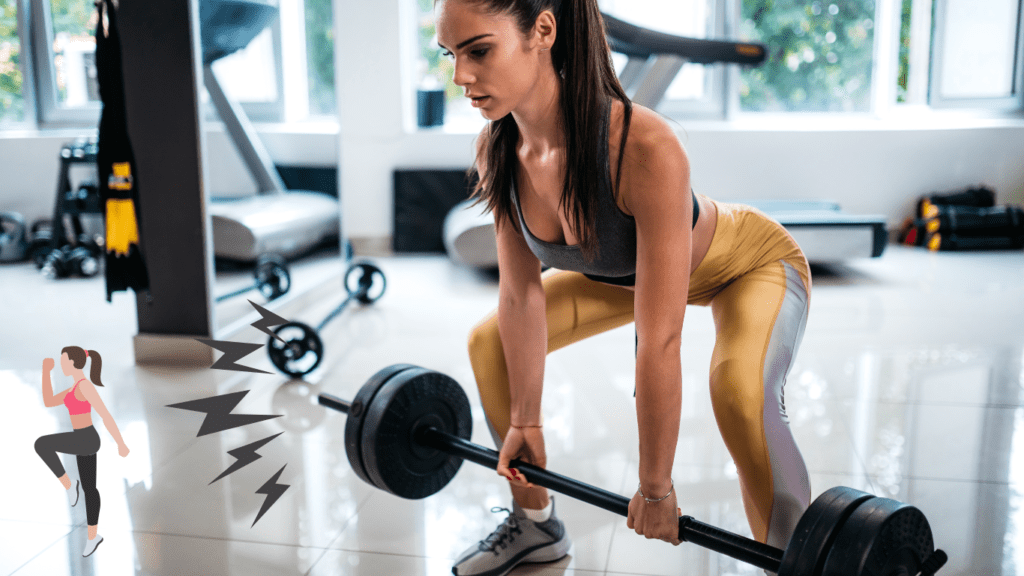
As Henry delved into the intricacies of programming deadlift routines for his clients, he recognized the importance of tailoring each program to their individual goals and experience levels. In this part, Henry would share his insights on how to improve your deadlift by programming effective and efficient training routines.
Programming Your Deadlift Routine
Programming a deadlift routine involved careful consideration of factors such as frequency, volume, intensity, and progression. By optimizing these variables, Henry could help his clients make consistent progress and avoid plateaus in their deadlift performance.
Frequency
The frequency of deadlift training varied depending on the individual’s goals and experience level. For beginners, Henry typically recommended deadlifting once or twice a week to allow for sufficient recovery and adaptation. As clients became more experienced and proficient in their technique, he might increase the frequency to three times per week, provided they could recover adequately between sessions. Advanced lifters might benefit from even higher frequencies, but Henry always emphasized quality over quantity, ensuring proper form and technique were maintained at all times.
Volume and Intensity
Volume and intensity were two key components of a well-rounded deadlift routine. Volume referred to the total amount of work performed, typically measured in sets and reps, while intensity referred to the relative load lifted, often expressed as a percentage of one’s one-rep max (1RM). Finding the right balance between volume and intensity was crucial for improving your deadlift while avoiding burnout or overtraining.
For beginners, Henry typically started with lower volume and moderate intensity to allow for skill acquisition and adaptation. This might involve three to four sets of five to eight reps at a moderate weight, with plenty of rest between sets. As clients progressed, he would gradually increase both volume and intensity, incorporating heavier weights and more challenging rep schemes to stimulate further strength gains.
Sample Programs
To illustrate the principles of deadlift programming in action, Henry provided his clients with sample programs tailored to their specific needs and abilities. For beginners, this might include a basic linear progression program, focusing on gradually increasing weight and volume over time. An intermediate program might incorporate periodization, with alternating phases of higher volume and intensity to promote muscle hypertrophy and strength development. Advanced lifters might follow a more advanced conjugate or concurrent training model, rotating between different deadlift variations and accessory exercises to address weaknesses and improve overall performance.
Regardless of the program, Henry always stressed the importance of consistency, patience, and progressive overload. Building a strong deadlift required dedication and persistence, but with the right approach, his clients could achieve their strength and fitness goals.
Programming a deadlift routine was a multifaceted process that required careful consideration of various factors, including frequency, volume, intensity, and progression. By improving your deadlift through effective programming, Henry’s clients could maximize their strength gains, minimize the risk of injury, and achieve long-term success in their fitness journey. As Henry continued to refine his coaching methods and tailor his programs to meet the unique needs of each client, he remained committed to helping them unlock their full potential and become the best version of themselves.
Mobility and Recovery
As Henry guided his clients through their deadlift training, he knew that optimizing mobility and prioritizing recovery were essential for long-term success. In this part, Henry would share his expertise on how to improve your deadlift by focusing on mobility, recovery, and injury prevention.
Mobility and Recovery
For Henry, mobility work was more than just stretching; it was about improving flexibility, enhancing range of motion, and ensuring proper movement patterns during the deadlift. Similarly, recovery techniques were not merely about resting; they were about rejuvenating the body, replenishing energy stores, and supporting muscle repair and growth. By incorporating mobility exercises, prioritizing recovery, and implementing injury prevention strategies, Henry’s clients could enhance their deadlift performance and reduce the risk of setbacks.
Mobility Work
Henry emphasized the importance of mobility work as a foundational aspect of deadlift training. By addressing mobility limitations and movement restrictions, his clients could optimize their biomechanics and perform the deadlift with greater efficiency and safety. Henry prescribed a variety of stretches and exercises targeting key areas such as the hips, hamstrings, and thoracic spine. These included dynamic warm-up drills, foam rolling, and static stretches to improve flexibility and range of motion. By incorporating mobility work into their warm-up routine, Henry’s clients could prepare their bodies for the demands of deadlifting and minimize the risk of injury.
Recovery Techniques
Recovery was another crucial component of Henry’s approach to deadlift training. He emphasized the importance of rest, sleep, and nutrition in supporting optimal recovery and performance. Henry encouraged his clients to prioritize sleep, aiming for seven to nine hours of quality rest per night to promote muscle repair and growth. He also emphasized the importance of nutrition, recommending a balanced diet rich in protein, carbohydrates, and healthy fats to support recovery and fuel workouts. In addition to rest and nutrition, Henry encouraged his clients to incorporate active recovery strategies such as walking, swimming, or yoga to enhance circulation, reduce muscle soreness, and improve overall well-being.
Injury Prevention
Finally, Henry educated his clients on the importance of injury prevention when deadlifting. While deadlifting is a highly effective exercise for building strength and muscle mass, it can also pose risks if performed incorrectly or with poor technique. Henry provided his clients with tips to avoid common deadlift-related injuries, such as maintaining proper form, gradually increasing weight and volume, and listening to their bodies for signs of fatigue or discomfort. He also emphasized the importance of warming up properly before lifting, using appropriate equipment such as lifting belts and straps, and seeking professional guidance if experiencing pain or discomfort.
In conclusion, optimizing mobility and prioritizing recovery were essential components of Henry’s approach to deadlift training. By incorporating mobility exercises, prioritizing rest and nutrition, and implementing injury prevention strategies, his clients could improve their deadlift performance, reduce the risk of injury, and achieve long-term success in their fitness journey. As Henry continued to refine his coaching methods and stay abreast of the latest advancements in mobility and recovery techniques, he remained committed to helping his clients unlock their full potential and become the best version of themselves.
Mental Strategies on How to Improve Your Deadlift
As Henry delved into the intricacies of deadlift training with his clients, he recognized the importance of mental strategies in achieving peak performance. In this part, Henry would share his insights on how to improve your deadlift by harnessing the power of the mind.
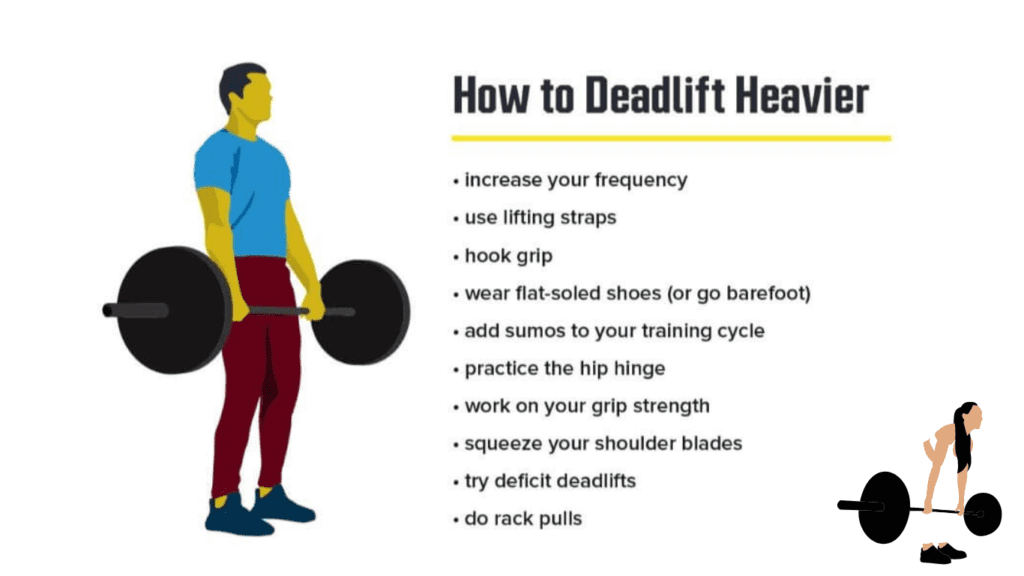
How to Improve Your Deadlift: Mental Strategies for Deadlifting
While physical strength was undoubtedly important, Henry knew that mental strength was equally crucial for success in the deadlift. Developing the right mindset, employing visualization techniques, and overcoming strength plateaus were all key aspects of mental strategies that could help his clients elevate their deadlift game to new heights.
Mindset
The right mindset could make all the difference between success and failure in the deadlift. Henry encouraged his clients to cultivate a positive and determined mindset, focusing on their strengths rather than their weaknesses. He reminded them that the mind often gave up before the body, and that mental toughness was essential for pushing through challenging lifts. By adopting a resilient mindset and maintaining focus and determination, his clients could overcome obstacles and achieve their deadlift goals.
Visualization
Visualization was another powerful tool that Henry used to help his clients improve their deadlift performance. By mentally rehearsing the lift in their minds, his clients could familiarize themselves with the movement pattern and build confidence in their ability to execute it successfully. Henry encouraged his clients to visualize themselves approaching the barbell with confidence, executing the lift with perfect form, and celebrating their success at the top of the lift. By repeatedly visualizing success, his clients could program their minds for success and enhance their performance on the platform.
Overcoming Plateaus
Strength plateaus were a common challenge faced by many lifters, but Henry had several strategies up his sleeve for helping his clients break through them. One approach was to vary the training stimulus by incorporating different deadlift variations or accessory exercises into their routine. Another approach was to focus on weak points in the lift, such as the lockout or grip strength, and target them with specific exercises or drills. Henry also encouraged his clients to set realistic goals and track their progress over time, celebrating small victories along the way. By staying patient, persistent, and focused on continuous improvement, his clients could overcome plateaus and continue making gains in their deadlift performance.
Mental strategies played a crucial role in improving your deadlift performance. By developing a resilient mindset, employing visualization techniques, and overcoming strength plateaus, Henry’s clients could maximize their potential and achieve their deadlift goals. As Henry continued to refine his coaching methods and support his clients on their fitness journey, he remained committed to helping them unlock their full potential and become the best version of themselves.
Real-Life Success Stories and Lessons form Them on How To Improve Your Deadlift
As Henry sat down to share stories of individuals who had significantly improved their deadlift, he couldn’t help but feel inspired by their journeys. These real-life examples served as powerful reminders of the potential for growth and progress, even in the face of challenges. In this part, Henry would highlight two success stories of different individuals who had overcome obstacles and achieved remarkable results in their deadlift journey.
Sarah’s Journey to Strength
Sarah had always been passionate about fitness, but she had struggled with her deadlift for years. Despite her best efforts, she couldn’t seem to break through her plateau and lift heavier weights. Frustrated and discouraged, she considered giving up on her goal of mastering the deadlift altogether.
However, Sarah refused to let setbacks define her. With the help of Henry’s guidance and support, she committed herself to a structured training program focused on building strength and improving technique. She embraced progressive overload, gradually increasing the weight and volume of her deadlifts over time. She also incorporated mobility work and recovery strategies to address any weaknesses and prevent injuries.
Slowly but surely, Sarah began to see progress. Her deadlift numbers started to climb, and she felt more confident and empowered with each successful lift. With dedication and perseverance, she eventually surpassed her previous personal records and achieved a deadlift she had once thought was impossible.
Tom’s Journey of Resilience
Tom’s journey to improving his deadlift was marked by setbacks and challenges, but it was also a testament to his resilience and determination. A former athlete, Tom had suffered a serious back injury that left him sidelined and unable to lift for months. Doctors warned him that he might never deadlift again, but Tom refused to accept defeat.
With Henry’s guidance, Tom embarked on a journey of rehabilitation and strength-building. He focused on corrective exercises to address muscular imbalances and mobility restrictions, gradually rebuilding his strength and confidence. Despite setbacks and setbacks, Tom remained committed to his goal of deadlifting again.
Through sheer grit and determination, Tom defied the odds and made a remarkable comeback. He not only regained his ability to deadlift but also surpassed his previous personal records. His journey was a testament to the power of perseverance and resilience in the face of adversity.
Lessons Learned:
These success stories taught Henry and his clients valuable lessons about the deadlift journey. They demonstrated the importance of perseverance, patience, and resilience in overcoming obstacles and achieving success. They also highlighted the effectiveness of structured training programs, progressive overload, and proper technique in improving your deadlift performance. Most importantly, they served as a reminder that with dedication and determination, anything is possible.
In conclusion, the stories of Sarah and Tom were a source of inspiration and motivation for Henry and his clients. Their journeys of growth and transformation exemplified the potential for progress and success in the deadlift journey. As Henry reflected on their stories, he felt a renewed sense of purpose and determination to help his clients achieve their own deadlift goals.
Final Thoughts on How to Improve Your Deadlift
As I reflect on the journey we’ve taken together through the intricacies of deadlift training, I’m filled with a sense of pride and excitement. Throughout this article, we’ve explored various techniques and strategies on how to improve your deadlift. From understanding the mechanics of the lift to perfecting form and incorporating advanced techniques, each part offered valuable insights and practical advice for maximizing deadlift performance.
Let’s recap the key points covered:
First, we delved into the importance of understanding the deadlift, its history, the muscles involved, and the benefits beyond just strength. We learned that the deadlift is a foundational exercise for building overall strength and functional fitness.
Next, we discussed common deadlift mistakes and how to avoid them, such as poor form, rounding the back, and neglecting warm-up. By addressing these pitfalls, we can reduce the risk of injury and optimize our performance.
We then explored perfecting our deadlift form through a step-by-step guide, visual aids, and helpful cues. Proper form is essential for maximizing strength and minimizing the risk of injury.
In the following parts, we learned about advanced techniques and variations, such as sumo, Romanian, and trap bar deadlifts, as well as strategies for progressive overload and incorporating accessory exercises.
We also covered the importance of mobility, recovery, and mental strategies in improving your deadlift performance. Mobility work, recovery techniques, and mindset play crucial roles in achieving long-term success.
Furthermore, we shared inspiring success stories of individuals who overcame obstacles and achieved remarkable results in their deadlift journey. These stories serve as powerful reminders of the potential for growth and progress, even in the face of challenges.
Now, it’s time to put all that we’ve learned into action. I encourage you to apply these strategies to your own training routine, whether you’re a beginner or a seasoned lifter. Set clear goals, stay consistent with your training, and seek guidance when needed. Remember, progress takes time and dedication, but with perseverance, anything is possible.
I also invite you to engage with our community by leaving comments, sharing your progress, or asking questions. Together, we can support and motivate each other on our fitness journeys.
In conclusion, I want to thank you for joining me on this journey through the world of deadlift training. I hope you feel empowered and inspired to take your deadlift performance to the next level. Now, let’s go out there and crush some PRs!


